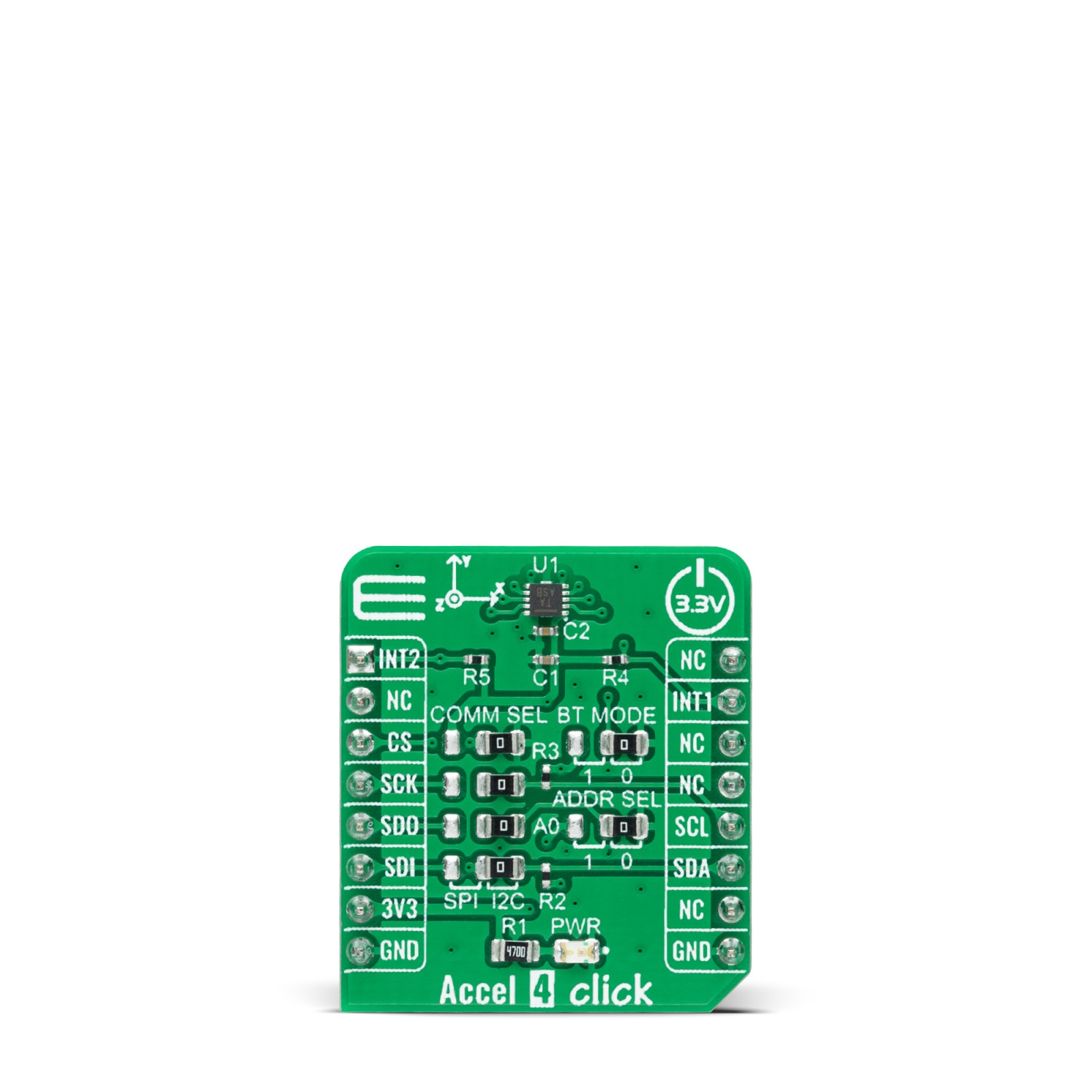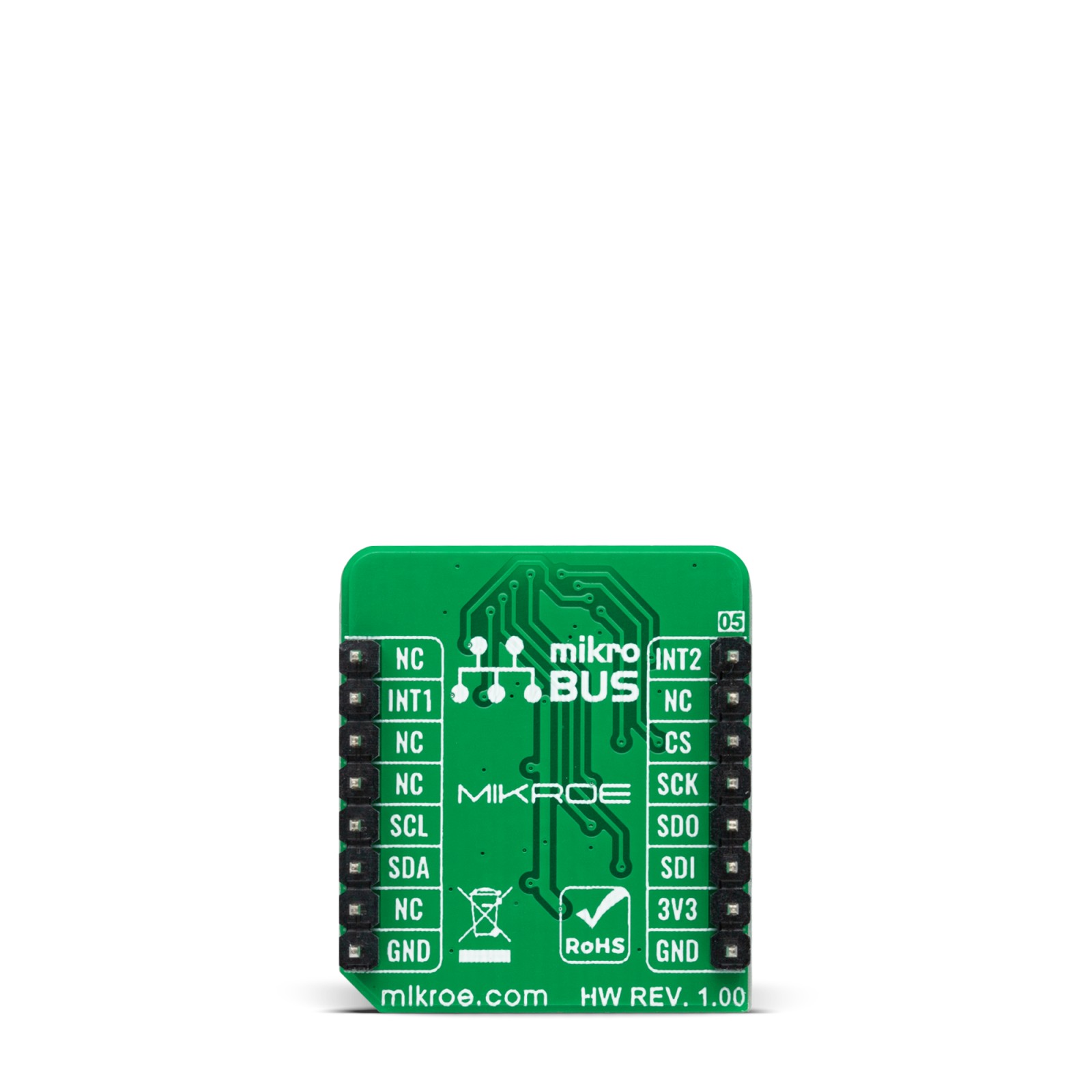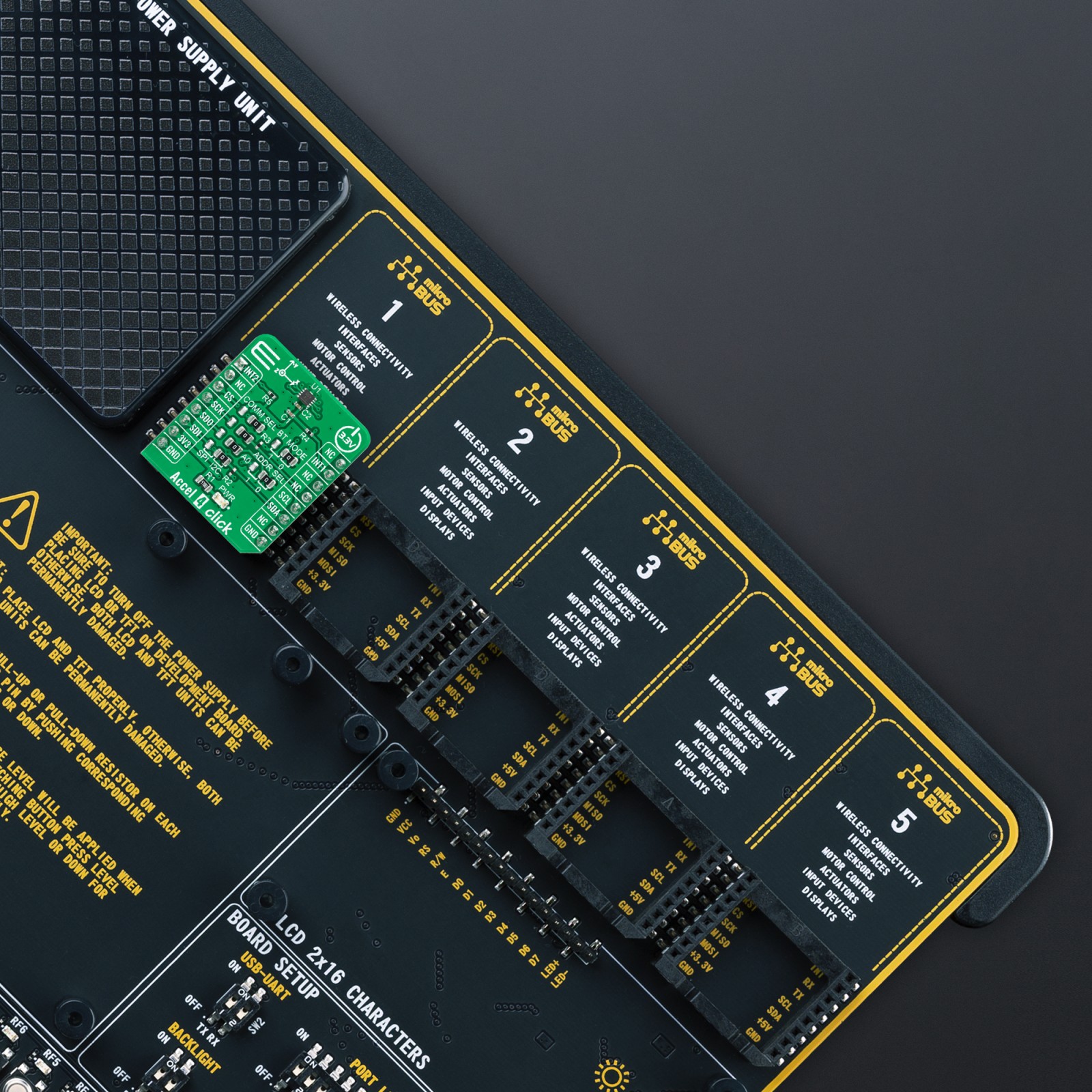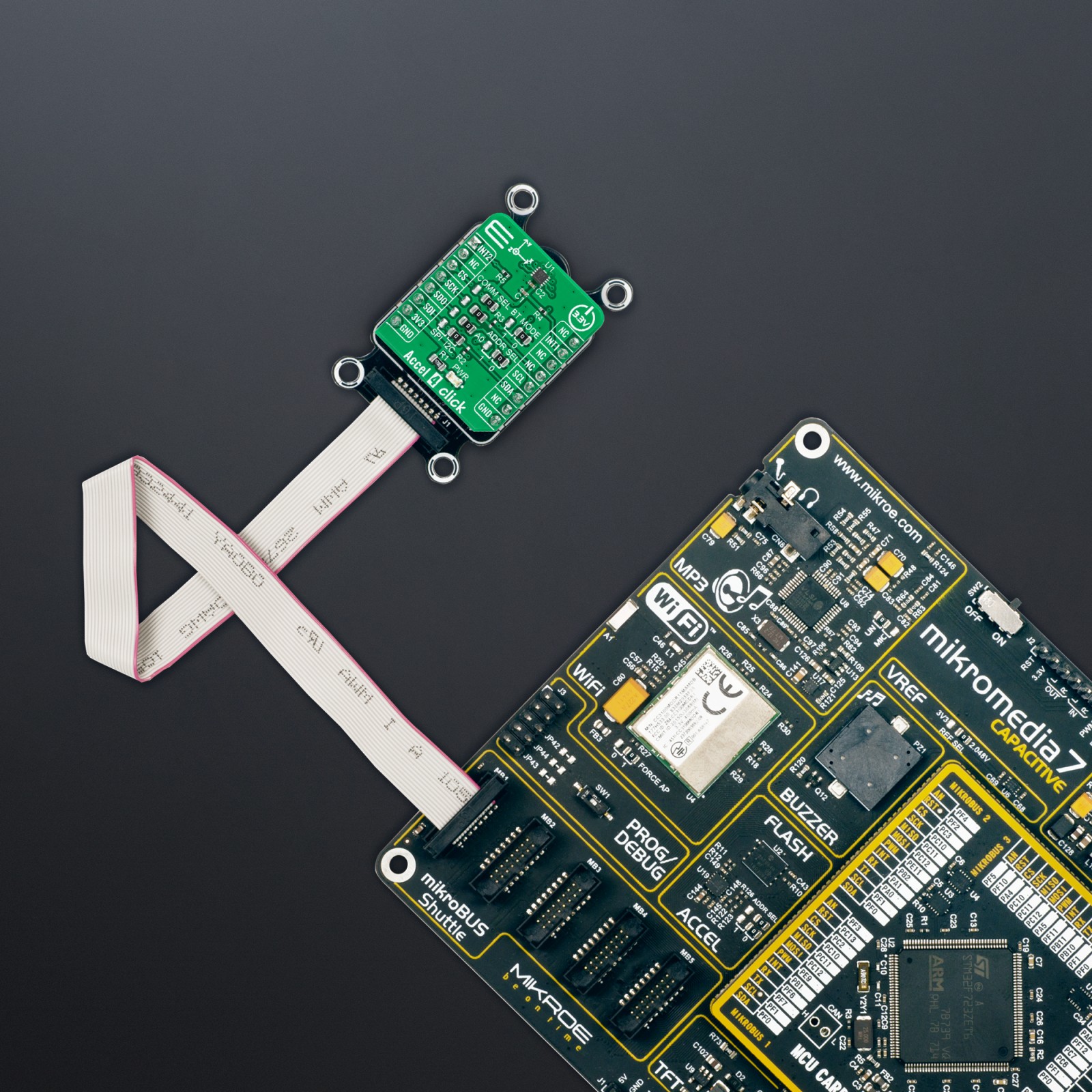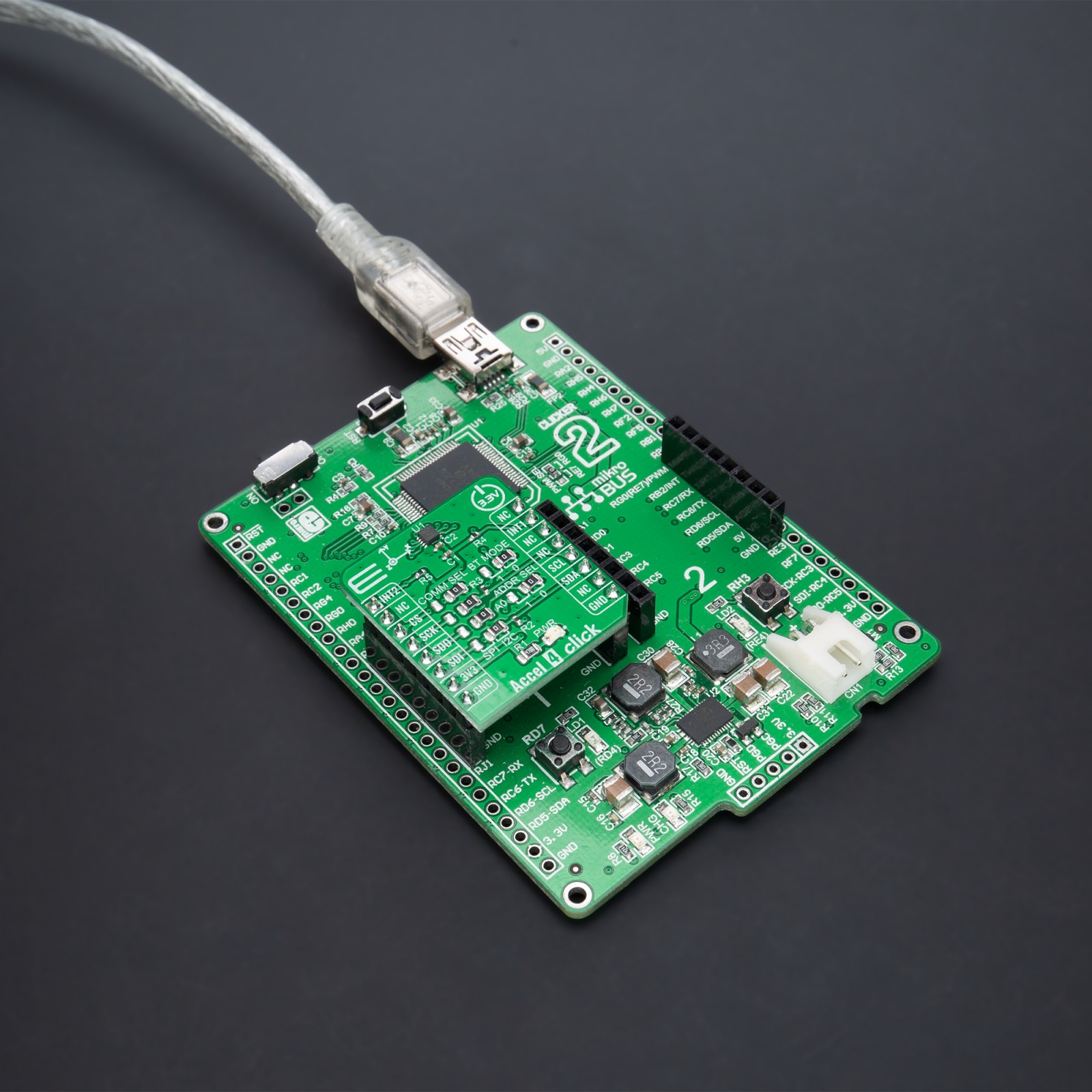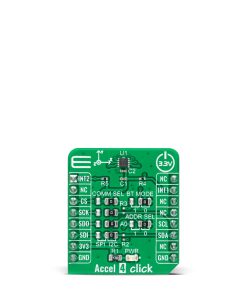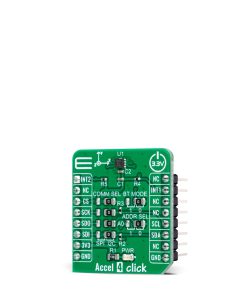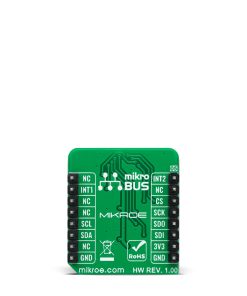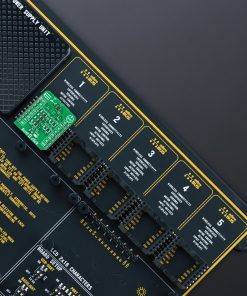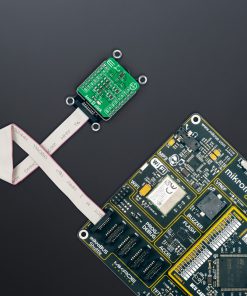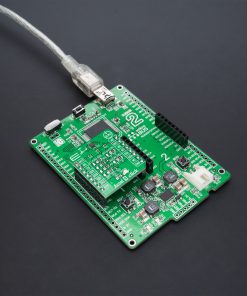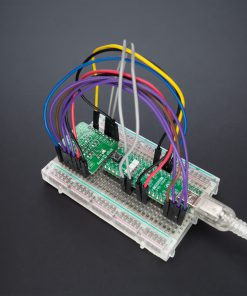Accel 4 Click
R130.00 ex. VAT
Accel 4 Click is a compact add-on board that contains an acceleration sensor. This board features the FXLS8974CF, a 12-bit three-axis accelerometer from NXP Semiconductors. It allows selectable full-scale acceleration measurements in ranges of ±2g, ±4g, ±8g, or ±16g in three axes with a configurable host interface that supports both SPI and I2C serial communication. The FXLS8974CF supports both high-performance and low-power operating modes, allowing maximum flexibility to meet the resolution and power needs for various unique use cases. This Click board™ is suitable for a wide range of automotive (convenience and security), industrial, and medical IoT applications that require ultra-low-power Wake-Up on the motion.
Accel 4 Click is supported by a mikroSDK compliant library, which includes functions that simplify software development. This Click board™ comes as a fully tested product, ready to be used on a system equipped with the mikroBUS™ socket.
Stock: Lead-time applicable.
| 5+ | R123.50 |
| 10+ | R117.00 |
| 15+ | R110.50 |
| 20+ | R106.34 |

